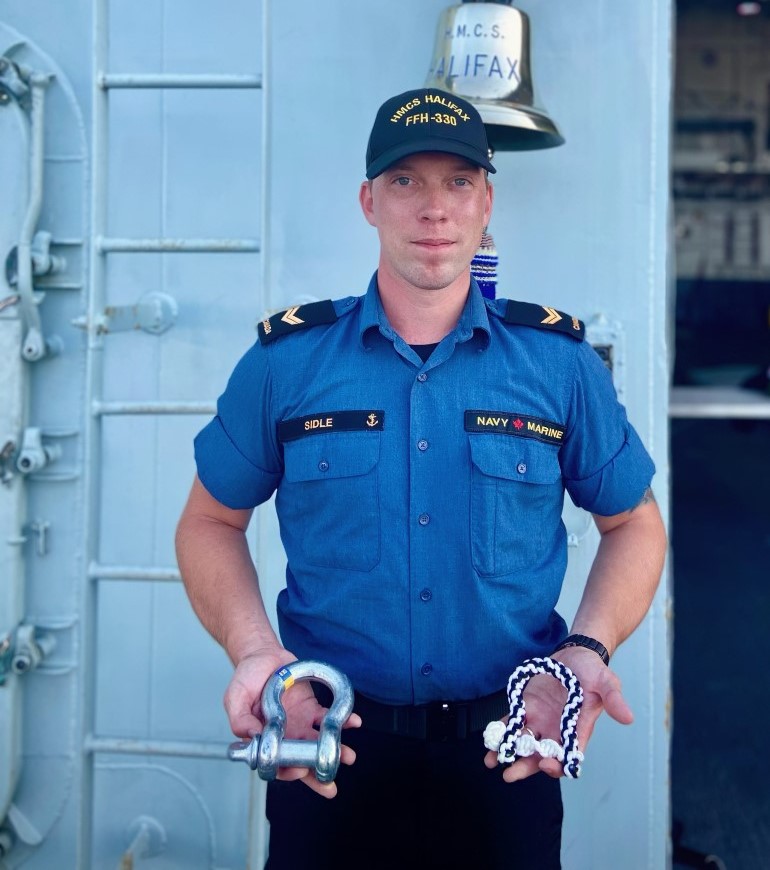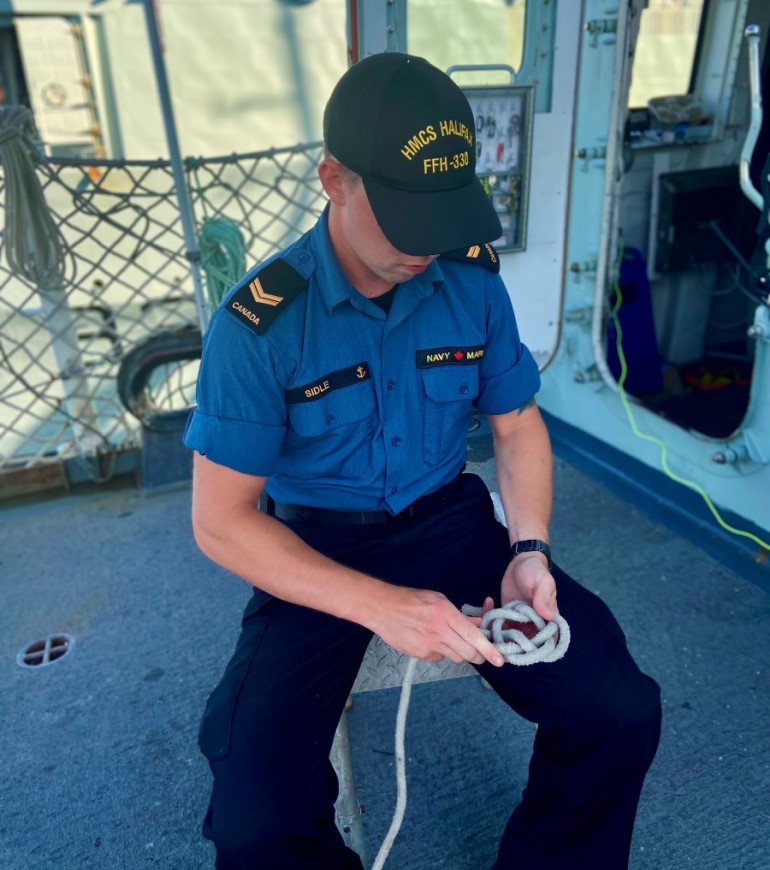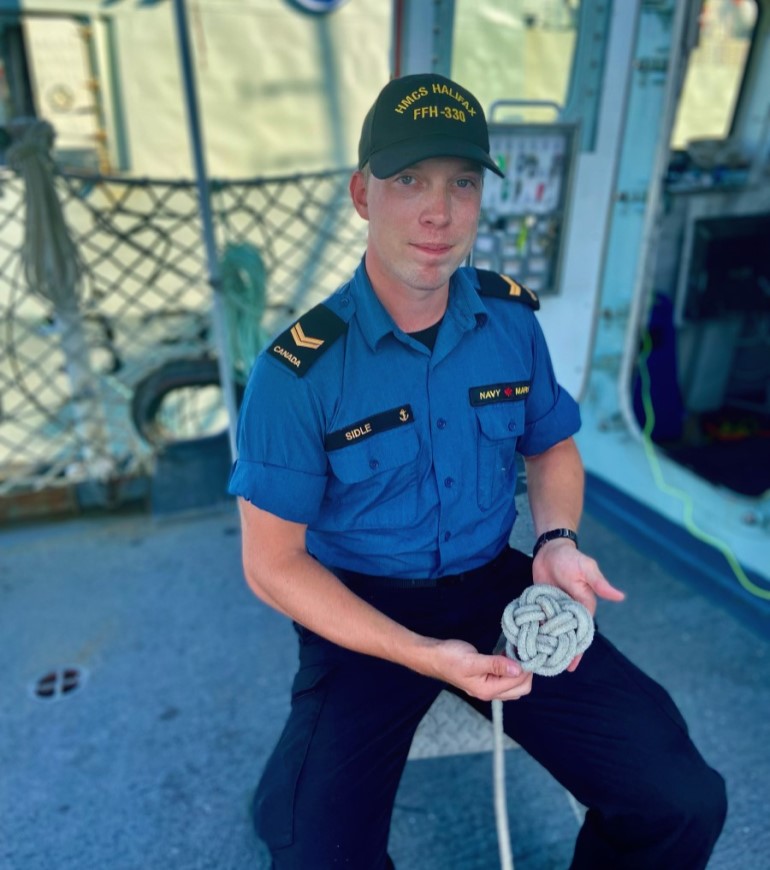Knot just ropes – keeping the rope work tradition alive: “It could save your life”
August 12, 2022 - Royal Canadian Navy
By Lilian Fridfinnson

Caption
S1 Keiran Sidle is a Boatswain and Surface Rescue Swimmer with the RCN. He is passionate about rope work and teaching young sailors the craft.
Once responsible for every piece of rope onboard a ship, the traditional Boatswain naval trade used to require a lot of handiwork.
Over time, the trade has evolved to require less knack and artistry, but Sailor First Class (S1) Keiran Sidle is dedicated to preserving the craft of rope work.
“We’d handle the splicing, the whipping, and now that stuff comes pre-made. It’s fading out the rope work part of our trade,” S1 Sidle said. “Decorative rope work isn’t taught anymore.”
‘Splicing’ is the formation of a joint between two ropes and ‘whipping’ is done to prevent rope fray.
Although the role has advanced, and boatswains are responsible for the operation and maintenance of a ship’s rigging, cargo handling and small crafts, S1 Sidle says the tradition of rope work is worth preserving in today’s navy for more than just the custom.
“It could save your life,” said S1 Sidle, who is also a Surface Rescue Swimmer. “When I rescue somebody, I have the horse collar around me. A lot of people don’t think of knots as being that important.”
The ‘horse collar’ is a rescue sling used by a rescue swimmer to bring someone back to the ship. A rope connects the ship and the horse collar, which is placed under the arms of the individual being rescued to bring them back in. For S1 Sidle, such rope work is practical and essential knowledge for those working at sea.
The usefulness of rope work is so paramount for S1 Sidle, he has taken on the role of teaching young sailors the art of rope work to offer a positive introduction to the navy and provide them with what he believes are crucial skills.
“I like teaching juniors how to do the trade. That’s like molding new minds, good habits, good mannerisms and a positive attitude toward the navy,” he said.
But the introduction to rope work does not end with young aspiring sailors. S1 Sidle creates art to garner attention for his trade and as a means to unwind in his free time. He posts his work to Facebook, selling some of his projects, even gifting his handmade knife sheaths and key chains to fellow sailors—reminding them of the functionality of rope.
“I feel like decorative rope work is an artsy way of getting people interested in rope work again,” he said.
S1 Sidle even incorporates his trade into his daily life, finding leisure in the tradition of his trade after long days at work.
“It’s a good way to relax. For me, I could be sitting, decompressing, watching TV, doing some rope work, and making something look pretty.”

Caption
S1 Keiran Sidle holds a handmade shackle made of paracord. The shackle is used to attach a snatch block to the deck of a ship. Photo submitted by Keiran Sidle.

Caption
S1 Keiran Sidle ties a Turks head knot. The knot is used to cover the end of another knot. Photo submitted by Keiran Sidle.

Caption
S1 Keiran Sidle holds a rosette knot. The rosette is a piece of decorative rope work. Photo submitted by Keiran Sidle.